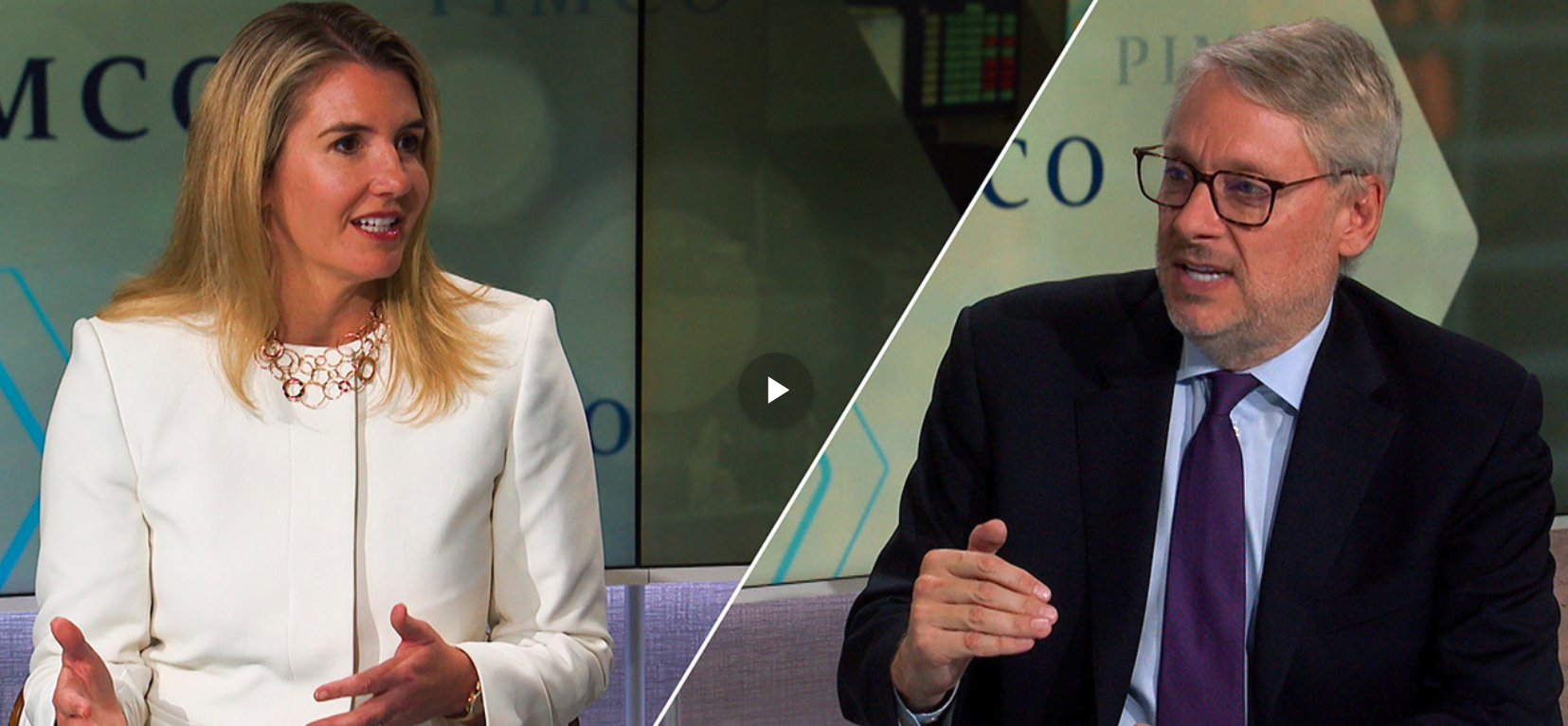The week that was …
Economic round-up
Cook sues Trump over dismissal
Federal Reserve governor Lisa Cook announced she was suing Donald Trump over attempts to fire her, calling the decision “unlawful and void”. Her sacking has raised questions over the US central bank’s independence. Read more from the BBC here and in ‘In focus’ below
UK food-price inflation
The rising cost of chocolate, butter and eggs has driven food-price inflation in the UK to its highest level in 18 months, according to data from the British Retail Consortium. Food-price inflation hit 4.2% in the year to August, up from 4% in July. Read more from the BBC here
US inflation
The Personal Consumption Expenditures Price Index (PCE), the US Federal Reserve’s preferred measure of inflation, showed core inflation running at 2.9%. This was up on June, but in line with economists’ expectations. Read more from CNBC here
US economy
The second estimate for second-quarter GDP in the US was revised up to 3.3%. This was higher than the original reading of 3% and outpaced economists’ expectations of a revision to 3.1%. Read more from the Independent here
US consumer confidence
US consumer confidence worsened slightly in August, declining 1.3 points to 97.4. This erased the gains seen last month, resuming the downward trend seen at the start of 2025. That said, the figure came in higher than economists had expected. Read more from ABC News here
Markets round-up
Nvidia results
Nvidia’s hotly-awaited results beat market expectations yet its share price still fell. The group recorded revenues of $46.7bn (£34.6bn) in the three months to the end of July. The results suggests that AI demand is still robust. Read more from Sky here and in ‘In focus’ below
UK bank shares sell off
Shares in the UK’s largest banks tumbled on fears the chancellor may raise taxes on the sector in the autumn Budget. NatWest, Lloyds Banking Group and Barclays experienced sell-offs after calls to introduce a new levy on bank profits. Read more from the FT here
Prospective US rate cut spurs markets
Wall Street indices continued to grind out new records in expectations of a cut in US interest rates next month. PCE data and worries over Fed independence have, however, had a negative impact on the futures market. Read more from Reuters here
“There has to be a question, of course, as to whether a plan to lower borrowing costs by stacking the Fed with rate-cut-friendly governors will actually work.
Selected equity and bond markets: 22/08/25 to 29/08/25
| Markets | 22/08/25 (Close) |
29/08/25 (Close) |
Gain/loss |
|---|---|---|---|
| FTSE All-Share | 5049 | 4793 | -1.5% |
| S&P500 | 6467 | 6460 | -0.1% |
| MSCI World | 4193 | 4178 | -0.4% |
| CNBC Magnificent Seven | 376 | 375 | -0.3% |
| US 10-year treasury (yield) | 4.26% | 4.23% | |
| UK 10-year gilt (yield) | 4.7% | 4.7% |
Investment round-up
Targeted support regime
The FCA’s proposed ‘targeted support regime’ has been broadly welcomed by industry participants – though some have warned the rules will need to be refined if the framework is to work in practice. The new regime is designed to address the ‘advice gap’, sitting between factual guidance and full personalised advice.
Baillie Gifford joins boutique group
The Independent Investment Management Initiative (IIMI), a think tank and advocacy group for independent asset management firms, has added Baillie Gifford to its network. IIMI is primarily focused on boutiques but Baillie Gifford has been allowed to join because it is independently owned.
W1M Wealth hires ex-Rathbones director
W1M Wealth Management – the newly merged entity of Waverton Investment Management and London & Capital – has appointed Jake Lewis as business development manager for adviser solutions as it looks to build its IFA-focused business.
Aegon launches green fund
Aegon Asset Management has launched a green investment fund focused on decarbonisation. The group said its Investment Grade Climate Transition fund is “designed to support the global transition to a low-carbon economy while delivering attractive, risk-adjusted returns”.
Evelyn Partners AUM at ‘all-time high’
Evelyn Partners’ assets under management (AUM) stood at an “all-time-high” at the end of the second half of 2025, with “strongly positive” net inflows, according to the group’s latest results. The group’s AUM for the half closed at £64.6bn – up from £62bn at the same point last year.
UK investors trim cash
UK investors are reducing their cash allocation, according to HSBC’s Affluent Investor Snapshot. The survey suggests cash allocations have halved over the past year in the average portfolio, falling from 38% to 19%, while over the next 12 months, 18% of UK investors aim to decrease their cash allocation further.
… and the week that will be
US economic barometer
A labour market report later this week should offer a crucial insight into the health of the US economy and may provide some indication as to whether interest rate cuts are imminent. It follows last month’s release of surprisingly weak US payrolls data, which raised expectations of a September cut. Read more from Reuters here
Grim September?
Are we in for another a tough month ahead? According to Dow Jones data, the Dow, S&P 500 and Nasdaq Composite indices traditionally all post their worst month of the year in September. Certainly, there have been worries over market complacency – though these could be allayed by a rate cut. Nevertheless, Mark Haefele, chief investment officer of UBS Global Wealth Management, believes the equity bull market will remain intact: adding: “In our base case, we expect an economic soft landing, solid corporate earnings and lower interest rates to support markets over the next 12 months.” Read more from CNBC here and from the FT here
The week in numbers
UK retail sales: Consensus expectations are that the delayed UK retail sales figures for July will rise 0.3% month-on-month, down from 0.9% in June.
Eurozone inflation: Consensus expectations for the flash reading for Eurozone inflation in August are that prices will rise 2.1% year-on-year, up from 2%; and 0.2% month-on-month, up from 0%. Core inflation is forecast to rise 2.4% year-on-year, up from 2.3%.
US manufacturing: The ISM manufacturing purchasing managers index (PMI) for August suggests activity is expected to improve slightly while remaining in contraction territory – at 48.2, down from 48 in July.
US services: The ISM services PMI for August is forecast to fall into contraction territory at 49.8, down from 50.1 a month earlier.
US employment: US non-farm payroll numbers are expected to slow to 50,000 in August, down from 73,000 in July while the unemployment rate is expected to hold at 4.2%. Average hourly earnings for the month are forecast to rise 0.3% month-on-month and 3.9% year-on-year, in line with July.
Chinese manufacturing: Consensus expectations are for the Caixin manufacturing PMI index to rise to 50 in August – back in expansion territory, from 49.5 the month before.
Chinese services: Consensus forecasts have the Caixin services PMI index falling to 52.4 in August – down from 52.6 in July.
In focus: Independence fray
The independence of the US Federal Reserve is under fresh assault. After his sustained campaign against Fed chair Jerome Powell, president Trump appears to have switched tactics – now looking to stack the monetary policy committee with dovish governors in an attempt to force through rate cuts. Not for the first time in this administration, investors will need to work out whether the threat is real or illusory.
Trump’s attacks on Powell had become commonplace – among other things, apparently, he was a “loser” and a “numbskull” with the “personality of a chair”. Now, though, the mysterious early departure of Adriana Kugler, who resigned as a Fed governor six months short of the end of her term, suggests a change of tactics.
Trump has since nominated Stephen Miran, a longstanding supporter of his economic agenda, to replace her. As things stand, it is unclear whether this appointment will be permanent or temporary but there has been considerable speculation Trump is keen on having a ‘shadow chair’ in post.
Then, last week, came the sacking of Fed governor Lisa Cook, with unsubstantiated allegations of mortgage fraud cited as the reason. There is likely to be a lengthy legal battle here as it is not clear the president has the authority to fire Federal Reserve governors – or indeed that she has done anything wrong. Either way, it has created wobbles in financial markets, with investors seeing it as an attack on the long-established principle of US central bank independence.
The pressure points so far have been in long-dated bonds, gold and the US dollar. Gold hit a five-week peak, while the dollar resumed its downward trajectory and long-dated bonds sold off. “Investors are extremely worried that politicisation of the Fed and too-cheap money will stoke future inflation,” explains David Roberts, head of fixed income at Nedgroup Investments.
“They will likely continue to chase shorter-maturity bonds but, where possible, avoid the ever-increasing risk of Trump-inspired boom-and-bust economics. Technically, that is known as a curve ‘twist’, with prices rising in one part of the market and falling in another. Transferring policies that have made private sector equity investors rich and lenders poor into public finances seems insanely short-sighted.’’
Yields rising slowly over time are much easier to digest than a sudden spike, but the news backdrop lends itself to swift changes in market mood and the kind of spikes in yields that cause fall-out across risk assets.”
There has to be a question, of course, as to whether a plan to lower borrowing costs by stacking the Fed with rate-cut-friendly governors will actually work. Trump may get the rate cut he wants, and thus lower short-term rates, but then long-term rates risk spiking higher.
In the near term, the Federal Reserve could borrow at shorter-dated rates, but it would be a very short-term fix – a glut of issuance will ultimately push up rates there too. Then again, perhaps that’s a problem for the next guy?
Many commentators believe Trump will back away. Markets appear to believe this too – otherwise the reaction might have been more extreme. “The chances of a direct challenge to the Fed’s autonomy are unlikely, in our view,” says Kurt Reiman, chief investment strategist at UBS. He goes on to argue this challenge would likely cause a backlash in financial markets, calling into question the long-term outlook for price stability and adding a risk premium to US treasuries.
“Our view is the White House would be unwilling to take this risk,” he says. “As such, we do not expect the appeal of US treasuries to be undermined by worries over Fed independence and we continue to view quality bonds as attractive.”
For his part, Anthony Willis, senior economist at Columbia Threadneedle, notes: “In the past we have seen the Fed is acutely aware of any stresses in bond markets and will intervene if necessary so that a bond crisis does not become a financial crisis.
“The bar for intervention is high, however, and beneath that we may well see some volatility. Yields rising slowly over time are much easier to digest than a sudden spike, but the news backdrop lends itself to swift changes in market mood and the kind of spikes in yields that cause fall-out across risk assets.”
A Financial Times survey of 94 economists showed many believe financial markets are underestimating the threat, however, and the attacks could lead to “a permanent shift at the Fed” towards prioritising jobs and lowering government-borrowing costs once Powell’s term as chair ends next year.
There is constructive internal tension within the Fed’s rate-setting policy committee, much of which stems from the Fed’s confused dual mandates, which currently are pulling in opposite directions.”
Nevertheless, beyond all these longer-term concerns, the changes at the Federal Reserve may tip the balance in favour of a rate cut in September. The decision on interest rates is complex and finely-balanced.
The assumption has been that tariffs will create higher inflation because companies will be forced to put up prices to maintain profitability. While the final tariff rates have been under negotiation, companies have generally held off raising prices – but, now they can better quantify the impact, they may start to do so.
“There is constructive internal tension within the Fed’s rate-setting policy committee, much of which stems from the Fed’s confused dual mandates, which currently are pulling in opposite directions,” note the Jupiter Merlin team in their latest outlook.
“While headline inflation, as measured by the Consumer Prices Index, is stable but higher than it should be at 2.7%, core inflation – which represents the official technical mandate in the inflation target and excludes food and fuel – has just risen from 2.9% to 3.1%.
“This is its highest level for five months, which suggests keeping rates on hold is appropriate. On the other hand, the Fed is obliged to maintain as close to full employment as the economy can support – hence the concern about that weak employment data.”
Even if the latest attacks on the Federal Reserve’s independence do not significantly change the immediate trajectory of interest rates and/or US borrowing costs, they may still contribute to a gradual erosion of the US’s credibility. The US has enjoyed lower borrowing costs than its fiscal position merits as a result of its position as the world’s reserve currency.
As Claudio Wewel, FX strategist at J. Safra Sarasin Sustainable Asset Management, notes: “The euro is emerging as a credible alternative to the dollar and the European Central Bank’s independence, along with the rule of law, may provide the currency with an edge over the dollar over the longer term.”
Trump may well succeed in packing the Federal Reserve with cronies but whether that will have the desired outcome is open to debate. At the same time, it could further dent the US’s credibility in international markets – and, as the UK has learnt to its cost, once that is gone, it is very difficult to restore.
Read more on this from the FT here and from Reuters here

In focus: Meh-I?
Nvidia delivered an astonishing set of second-quarter results but investors are growing tougher to impress. Despite maintaining sales growth of more than 50%, the chip giant’s share price fell in the aftermath of the announcement, showing the strength of market expectations. It may demonstrate that, while the AI story is intact, the upward trajectory of the mega-cap technology companies could be in peril.
The Nvidia results showed the extent to which the US administration’s economic policy is having a real-world effect on corporate growth – the group did not include any second-half sales to China in its forward earnings guidance. According to chief executive Jensen Huang, China would be a $50bn (£37bn) opportunity for Nvidia this year, with the potential for 50% annual growth – if it were able to sell what it wants.
Largely single-handedly, Nvidia has been keeping the Magnificent Seven afloat for much of 2025. Apple and Tesla are still down for the year to date, while Amazon’s performance has also been lacklustre. The previously powerful group has notably weakened relative to the wider market and this latest news may finally indicate embedded expectations are too high.
“Many of the hyperscale technology companies are in a similar boat,” says Rob Perrone, investment specialist at Orbis Investments. “Competitive intensity is heating up and, as that intensity rises, profitability falls. What were once monopolies are now fierce competitors. What were once capital-light businesses are now investing more capital than all the oil majors combined.
He goes on to offer the example of Meta, explaining: “Since the end of 2019, net income has grown by about 25% per annum – but so have capital investment and share-based compensation. Stripping out share-based compensation, Meta’s growth in free cashflow has been zero since 2019. The company is now depreciating AI servers over five years – yet those servers are stuffed with chips that lose their edge in a single year. When depreciation schedules become interesting, you are talking about a capital-intensive business.”
The astonishing rise of the mega-cap technology companies may finally be drawing to a close. As the nature and competitive position of these businesses change, they are finding it increasingly difficult to run ahead of the extraordinary expectations set for them. It is unlikely to be a 2000-style crash – simply a recalibration towards other sources of growth in global stockmarkets that have for years been overlooked.
Read more on this from the FT here










